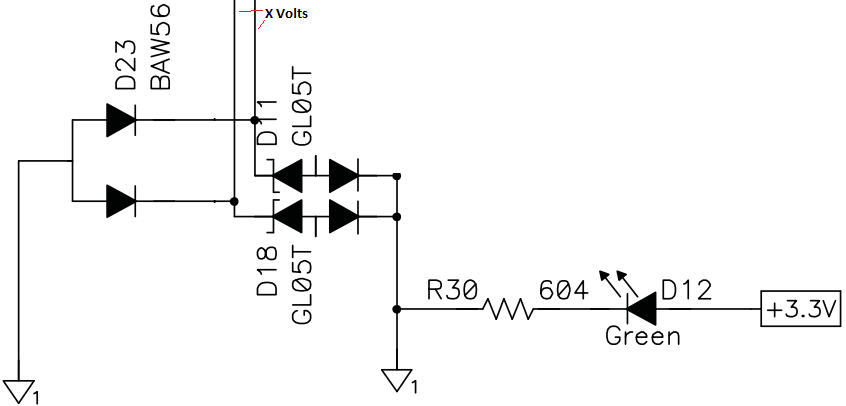
My question is: Does this circuit isolate the "X Volts" lines from ground (1) If not, how should I implement an opto-coupler to provide isolation between the data lines ("X Volts") and ground? (Question 1 - Main question)
I briefly looked up the datasheets for both the BAW56 and the GL05T
The BAW56 is a high-speed switching diode? Is this for when one line is in use it will close the other line? (Question 2)
and the GL05T is for ESD/groundloop protection is this correct? (Question 3) It looks like Unidirectional Clamping as shown in the datasheet. So this means no current can pass FROM ground, and only current can pass TOWARD ground once the zener is satisfied?
It doesn't seem to be isolated because I don't see any opto-couplers involved.
Further information:
- "X Volts" lines are data lines pulled up (with resistors) to 3.3v
